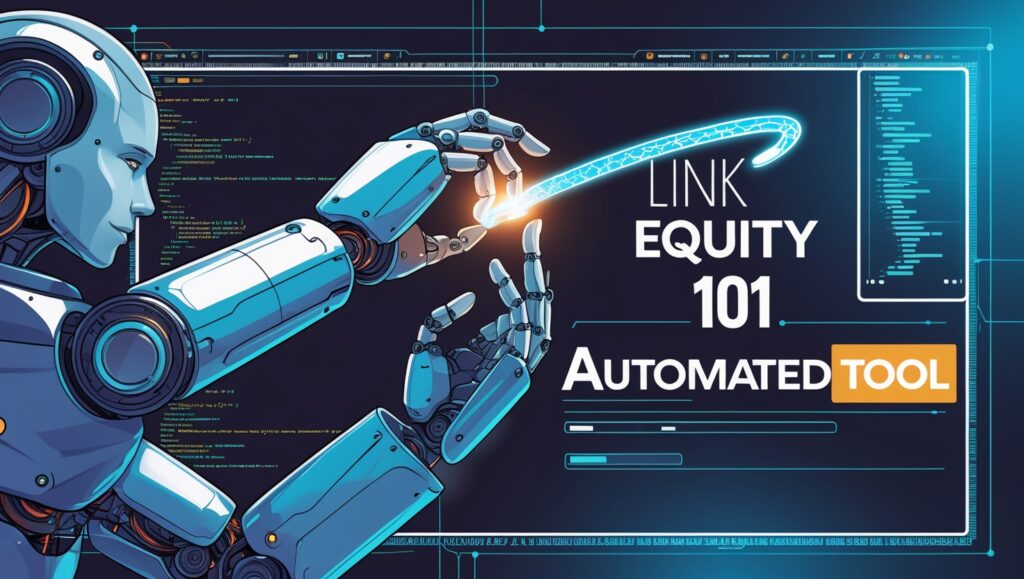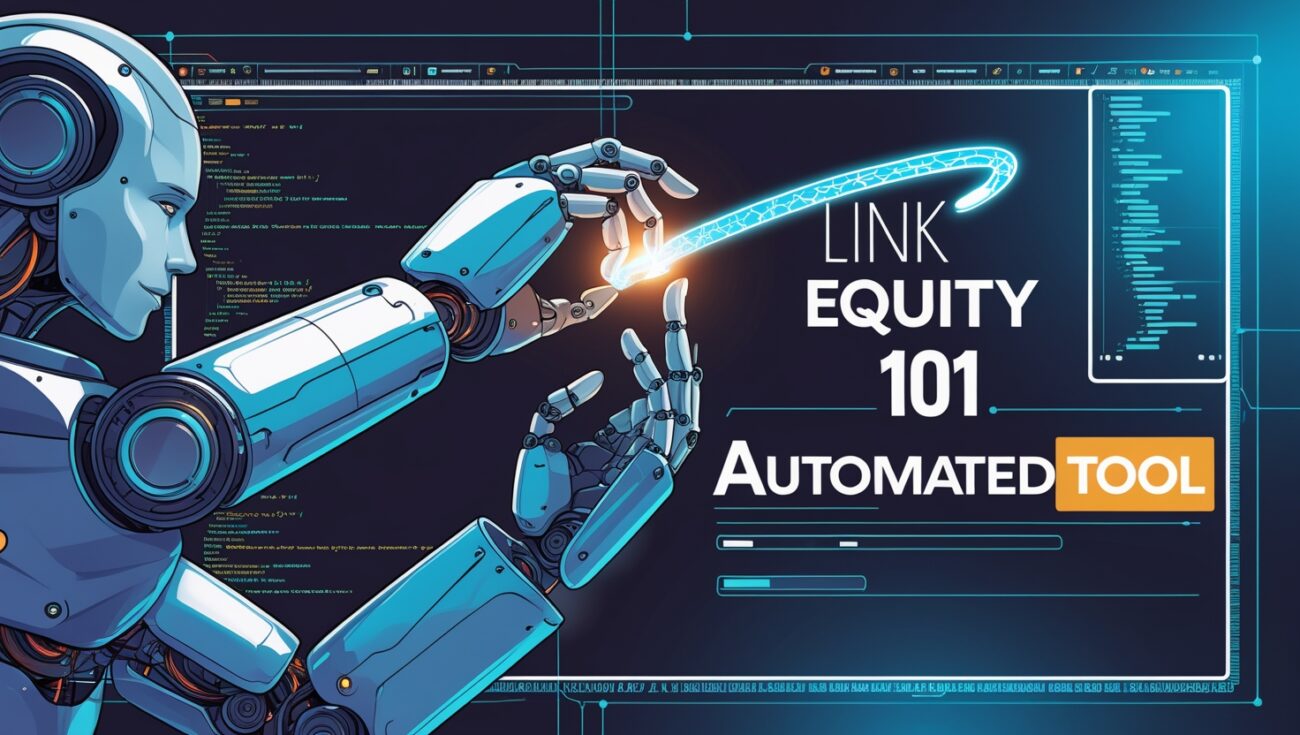Link Equity 101: How to Pass SEO Authority with an Automated Tool
Every SEO professional and content creator dreams of a high-ranking website. But behind the scenes, there’s a fundamental principle that makes it all happen: link equity. You might also know it as “link juice.” It’s the concept that authority and value are passed from one page to another through links. While external links (backlinks) from other websites are a powerful source of this equity, how you manage it within your own site is just as critical.
For me, understanding and mastering link equity was a game-changer. It transformed my approach from simply creating content to strategically building a network that makes my entire site more powerful. The good news? You don’t have to be an SEO guru to do this. With the right tools, you can automate this crucial process and start passing SEO authority like a pro.

Table of Contents
What is Link Equity?
In simple terms, link equity is the authority or value that a hyperlink passes from one page to another. Think of it as a vote of confidence. When a page has a high authority—either from a lot of quality backlinks or because it’s a prominent page like your homepage—it has a lot of “equity” to pass. Every link on that page shares a bit of that value with the pages it points to.
This is a key part of how search engines like Google understand which pages are the most important and authoritative. The goal is to build a network where your most powerful pages are consistently passing link equity to the pages you want to rank.
Understanding Link Equity in SEO (and How to Boost It with Internal Linking)
One of the most overlooked parts of SEO is link equity — also known as “link juice.” In simple terms, link equity in SEO refers to the value or authority that passes from one page to another through hyperlinks. When a page with high authority links to another page, some of that credibility transfers — and that’s how rankings improve.
So what does SEO equity or SEO link equity really mean? Think of it like reputation sharing. Every link acts as a vote of trust, helping Google understand which pages are the most important and relevant. The stronger and more contextual your linking structure, the more SEO equity your site builds over time.
The best part? You don’t need thousands of backlinks to grow link power. Smart internal linking distributes link equity SEO across your entire website — meaning your high-performing pages can lift newer or lower-ranking ones. That’s why I use Linkbot for internal linking automation. It creates automated internal links that spread link value strategically, helping me strengthen my entire domain instead of just a few top pages.
If you’re still unclear about SEO equity meaning, imagine this: each page on your website holds a certain amount of authority. When you link pages together, you’re sharing that authority, helping Google connect the dots between topics and assign value more accurately.
That’s why managing link equity SEO manually can be tricky — it’s easy to overlook connections or overlink certain pages. Tools like Linkbot make it effortless by automatically identifying linking opportunities that pass the most value where it’s needed.
So next time you’re optimizing your content, don’t just chase backlinks — focus on keeping your link equity flowing inside your site. With Linkbot, every internal link you create becomes a smart investment in your overall site authority and long-term rankings.
The Link Equity Challenge: Manual is Messy
Manually managing link equity is one of the most tedious and error-prone tasks in SEO. As your blog grows, it becomes nearly impossible to:
- Identify High-Authority Pages: You can’t remember which of your hundreds of articles have the most backlinks or are the most prominent.
- Find Under-linked Content: You’ll inevitably have valuable articles that are buried deep in your site with no incoming links, meaning they receive zero link equity.
- Maintain a Consistent Strategy: Without a system, your internal linking can become a chaotic mess, with no clear direction for passing authority.
This is where you’re wasting a significant amount of your potential. You might be getting great backlinks to your homepage or a viral article, but if that authority isn’t passed down to your other important pages, you’re leaving a massive opportunity on the table. This is the exact problem that automated tools solve. If you’re ready to stop wasting time on manual efforts, start your automated link equity journey with Linkbot today.
How Automated Tools Master Link Equity
Automated internal linking software is specifically designed to master the art of passing link equity. They analyze your entire site and provide data-driven suggestions to create a clean, purposeful link network.
- Directing Authority: The best tools can identify your most authoritative pages—the ones with the most inbound links—and recommend linking from them to your high-priority pages. This is the most powerful way to pass link equity to the pages that need it most.
- Revitalizing Low-Authority Pages: They can also find your pages that have low authority and no incoming links, then suggest relevant places to link to them. This instantly gives those pages a boost and brings them into your site’s valuable network.
- Fixing Orphaned Pages: A great tool will automatically scan your site to find “orphaned pages”—content that is literally cut off from your main link network. These pages receive no link equity and are hard for search engines to find. Fixing this is a simple yet high-impact task that an automated tool excels at.
Using a tool is the most efficient way to ensure your link equity is flowing exactly where you want it to. Check out how Linkbot can help you build and maintain a powerful internal link network.
The Strategic Advantage of Automation
Beyond just passing link equity, an automated approach provides a significant strategic advantage. It ensures that your website has a clean, hierarchical structure that is easy for both users and search engines to understand. A well-organized site is a hallmark of a professional, trustworthy brand, and that’s exactly what you want to communicate.
The time saved on manual work is also a huge benefit. Instead of spending hours auditing your site and hunting for opportunities, you can use that time to create more of the high-quality content that will bring in even more link equity for you to distribute. Linkbot’s automation is an investment in your time and SEO success.
Conclusion: Take Control of Your SEO
Link equity is not a mysterious concept; it’s a logical and controllable part of SEO. The key is to stop letting it flow randomly and start directing it with purpose. While a manual approach is possible on a small scale, it’s not a sustainable or effective long-term strategy for a growing website.
By embracing the power of automated internal linking software, you take complete control of your site’s SEO authority. You ensure every link has a purpose, every page receives its fair share of value, and your entire website works together as a cohesive, powerful entity. You can learn more about how to pass link equity effectively with Linkbot here.
Beyond just passing authority, a clean and well-structured internal link network, made simple with automation, has a significant impact on your site’s “crawl budget.” For a search engine, this budget is the number of pages they are willing to crawl on your site in a given period. When you have a messy site with orphaned pages and dead ends, you’re wasting that valuable budget. By directing link equity with purpose, you ensure every crawl is efficient, leading to faster indexing and better overall SEO performance.
Furthermore, a well-defined internal link structure is the foundation of a strong content cluster strategy, which is a key component of topical authority. When you consistently link a group of related articles to a central pillar page, you are signaling to search engines that your site is a comprehensive and authoritative resource on that specific topic. This reinforces the link equity of your entire cluster, leading to higher rankings for all the pages within it.
The anchor text you use for your internal links is also a crucial part of passing link equity. Manually, it’s easy to fall into the trap of using the same keyword over and over, which can look unnatural. Automated tools, however, often analyze the semantic context of your content and suggest a variety of natural-sounding anchor texts. This not only makes your links more effective but also helps you build a healthier, more authentic link profile.
The long-term, compounding effect of a well-sculpted internal link profile is what truly sets it apart. Each new link you create is an investment in your site’s future authority. Over time, these individual links build upon each other, creating a powerful network that consistently drives organic traffic. I‘ve watched older, less prominent content get a new lease on life just because I connected it to a high-authority page with an automated tool.
Think of your internal linking strategy in terms of a “hub and spoke” model versus a flat structure. In a flat structure, all pages are equal, and link equity is diluted. With a hub-and-spoke model, you have clear authority centers that pass value to supporting content. Automated tools make it simple to implement this hierarchical structure, ensuring that your link equity is always being used efficiently.
A well-organized internal link structure also directly influences key user metrics. When a user lands on a page and is presented with a clear, contextual link to another relevant article, they are more likely to stay on your site longer and click through. This reduces your bounce rate and increases their time on site—both of which are strong signals to search engines that your content is valuable and worth ranking.
For me, one of the biggest benefits of using an automated tool is how it streamlines the link auditing process. Without a system, trying to find and fix broken links or identify pages with no incoming links can be a nightmare. These tools provide a clear dashboard that makes it simple to manage your entire link profile, ensuring your link equity is never wasted on a dead end.
I often reflect on how the process has changed my entire SEO workflow. It’s moved my approach from a reactive, chaotic one to a proactive, strategic one. I no longer have to worry about whether I‘m passing link equity correctly; the tool handles the heavy lifting, freeing me up to focus on creating more of the high-quality content that brings in even more authority.
The connection between internal linking and mobile SEO is also profound. A clean, logical, and purposeful site structure makes it easy for mobile users to navigate your content, which is a key part of providing a good user experience and a positive ranking signal. Automated tools ensure this structure is built correctly from the ground up, regardless of your device.
A well-sculpted internal link profile is a powerful signal of trustworthiness and authority in Google’s eyes. It shows that your website is not just a collection of random articles, but a cohesive and valuable resource for your audience. This contributes directly to a higher E-E-A-T score, which is becoming increasingly important for ranking success.
Ultimately, the return on investment for an automated tool is clear. When you consider the value of the time saved, the improved rankings from better link equity distribution, and the increased organic traffic, the cost of a tool is a small price to pay for such a significant and long-term advantage.
By taking control of your link equity, you are taking control of your SEO destiny. You are ensuring that every ounce of authority your site earns is used to its full potential, transforming your website from a simple collection of pages into a cohesive and powerful entity that is primed for long-term growth.

